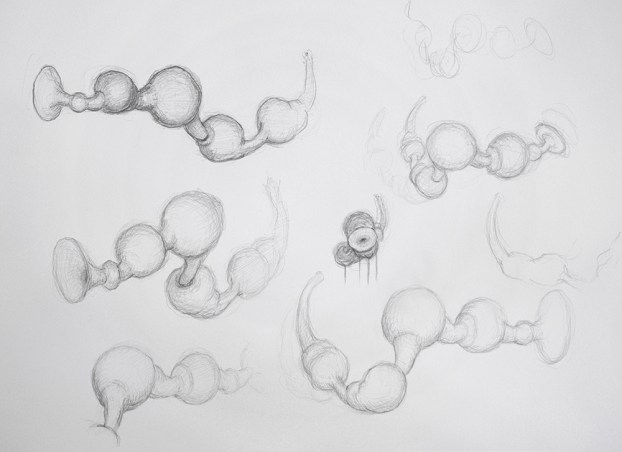
There is a world of difference between thinking art and doing it. That seems obvious, I know, but it is easily forgotten with the blurring of boundaries between disciplines in the arts today. It is good that things intermix, heterozygosity is so much healthier than the alternative. However, it is also good to bear in mind the distinction between theory and practice. I cannot see how making an artwork can be anything but practice-based. To theorise is not the same as to do, theory is seldom wholly applicable in the real world: metal buckles, clay slumps, paint is hard to handle and planning never quite fits the vagaries of time. This is where the role of the imagination comes in and can cause problems. Imagination is essential for idea formation and ambition but is it enough? Can an artwork exist and be produced through the imagination alone?
An artwork can stimulate the imagination but I do not see it as the sole element in the making of that artwork. To go from imagining making to actually making is a very large step indeed. One that needs years of practice, failure and training for it to be possible to think of something and then do it without encountering technical, skill and practicability boundaries. An artwork, albeit the product of imaginative thinking, is not its sole product. There is the techne, the episteme and the phronesis; the craft, the knowledge and the wisdom to use it, whether writing poetry or designing a monumental work. Often it seems that the ancient Greeks found a word for everything that is not technologically based.
In the previous post, I mentioned how the latest work is a hybrid of a number of other ideas and models I have gone through in the past year. It presents challenges both of concept and making, two things that constrain the translation of an unfettered notion, product of the imagination into a physical artwork in a given material.
Amy Kind in her article on Aeon describes how she approaches the dichotomy, or ambivalence, that can arise from the ways in which the imagination has traditionally been thought of exemplified by Immanuel Kant’s classification. What Kant called productive imagination and reproductive imagination are differences in kind and perhaps do not help much in deciding which the role of imaginative thinking in a given situation. Kant and others before him noted the difference between cognitive rational productive imagination, constrained by the ‘rules of the game’ which forms concepts, and the ability to form a mental world view in the mind, using reproductive imagination which is divorced from reality but based on what we infer using the former kind.
Kind resolves ambivalences that arise from this classification by looking, not at different kinds but different uses of the imagination. She suggests that imagination can be transcendent or instructive in function. Science and problem solving are instructive ways constrained by convention and purpose. Art and literature lean more towards the transcendent form of imagination. This can seem frivolous at times, without obvious utilitarian purpose which may go some way to explain why artists are always be called to justify themselves by doing something ‘useful’. But this is a discussion for another time.
Art can transgress boundaries and ignore the constraint of practicality. But even here there is problem solving and constraints when translating from that space in the mind and its embodiment. This is something that purely process-led art practice has largely resolved by allowing things to take their course once set in motion with the artist as a facilitator. But even hear, there are needs to be met when designing the execution of such thought experiments.

My practice is very much orientated towards outcome through process. This means, that the way something is done is an essential part of an envisaged outcome: behaviours and circumstances change the direction of travel during making. However, because my work is dependent on chosen materials with their specific behaviours I need to be in control of those behaviours. I could make the behaviours themselves be the content of the work itself and relinquish any formal part in the process but that is not in my nature. So in this project, planning and practice form an essential part of the process. Drawing and modelling are part of using the instructive imagination to explore the practical possibility for transcendent visualisations to be brought into the physical field. By drawing and looking at every aspect and detail in a cognitive fashion, I gradually resolve the inconsistencies that would render the work less free to behave during its making. By this freedom I mean, allowing the unexpected to play a positive role instead of frustrating the process. I feel fortunate because I can draw the idea and develop a felt detailed knowledge of how it comes together. I am aware of the danger of overcontrolling the outcome and that poietic spontaneity is important during making. However, knowing the material thoroughly and understanding the formal elements and making process goes a long way to maintaining material vigour and allowing surprises hitherto unseen to play their part: behaviours are given boundaries within which they can meaningfully become express.
